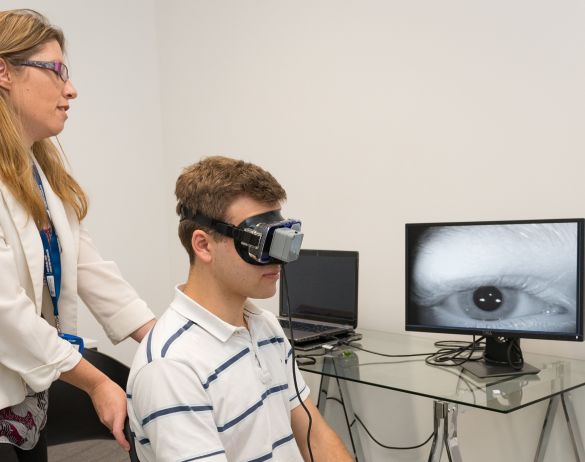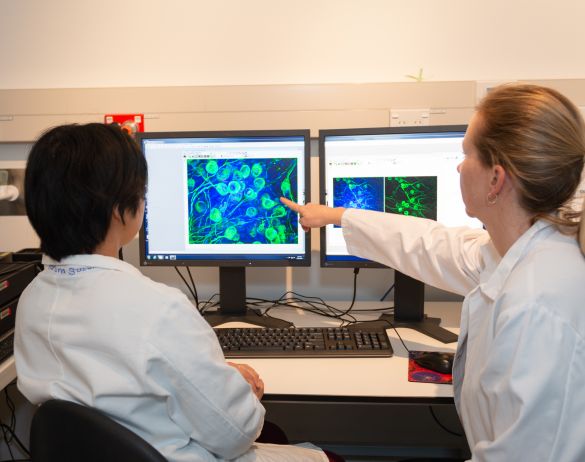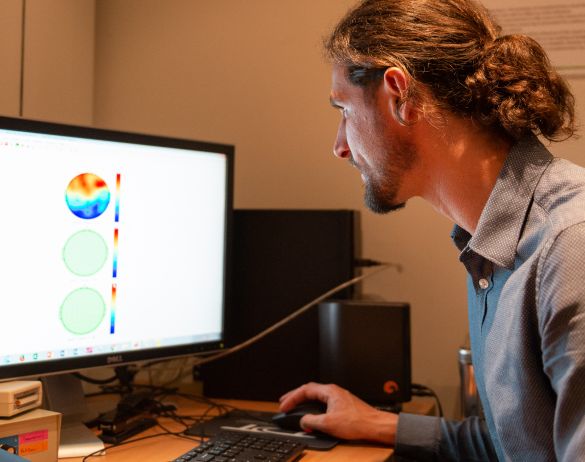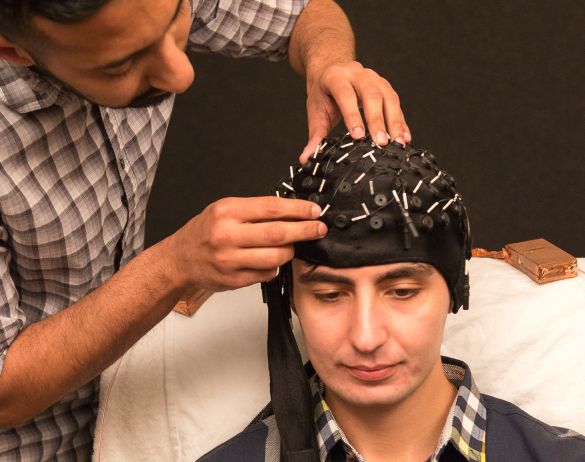
Principal Investigator: Dr Rachael Taylor, University of Auckland
Associate Investigators: Dr Kim Wise, NZDBC, Prof Denise Taylor, AUT, Profr Suzanne Purdy and Prof Peter Thorne, University of Auckland.
Suppression video head impulse testing was recently introduced as a simple, non-invasive method of assessing inner ear balance function. During testing, the patient wears a pair of video-recording goggles while staring at a laser target projected from the goggles onto a wall. Quick head turns generate eye movements that are recorded by the goggles to determine the level of function. This study will investigate the effects of attention and cognition on eye movement responses in patients with cognitive, neurological and balance impairment. Knowledge of how the test is affected by different subject factors is important for the interpretation of results.

Principal Investigator: Dr Haruna Suzuki-Kerr, University of Auckland
Associate Investigators: Prof Peter Thorne, A/P Srdjan Vlajkovic, University of Auckland
Intratympanic drug injection to the inner ear precludes systemic side effects and bypasses the blood-labyrinth barrier. Currently, the drug delivery via this route is limited by the permeability of the round window membrane (RWM), one of the two openings to the inner ear. In order to understand and improve the drug delivery into the inner ear, we aim to visualise the diffusion of tracer molecules across the RWM, and try to increase its penetration by applying reagents. The outcome from this study will provide proof-of-concept for a new drug delivery approaches through the RWM to the inner ear.

Principal Investigator: : A/P Grant Searchfield, University of Auckland
Associate Investigators: Dr Mithila Durai, University of Auckland, Prof Nikola Kasabov and Anne Wendt, AUT
Tinnitus (“ringing in the ears”) is a highly prevalent condition affecting 6% of the New Zealand general population and 13.5% of over 65’s. Although there is no cure for tinnitus, a short loud sound can suppress tinnitus for a brief time. This suppression is called Acoustic Residual Inhibition (ARI). This research will investigate the behavioural effects and neural correlates of ARI. It will use Electroencephalography and a computer model of neural activity developed in NZ, called the NeuCube, to examine the processes responsible for tinnitus generation and its suppression.

Principle Investigator: Dr Michael Maslin, University of Auckland
Associate Investigators: Dr Phil Bird, CDHB, Dr Michel Neeff, ADHB, A/P Greg O’Beirne, University of Canterbury, Prof Suzanne Purdy, A/P Grant Searchfield, Prof Peter Thorne, University of Auckland
Tinnitus, the perception of sound without an external source is common, affecting around 10% of adults. Tinnitus can seriously reduce quality of life, for example through annoyance, sleep deprivation, anxiety and depression. Since tinnitus is associated with hearing loss, a common theory for the underlying cause is that the brain reacts to the hearing loss by ‘turning up the volume’. We aim to identify abnormal brain activity associated with tinnitus following hearing loss due to surgical procedures to remove a tumour on the hearing nerve, information that is essential for understanding exactly how the brain turns up the volume.